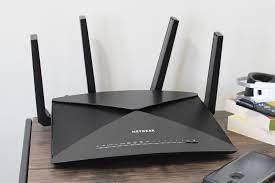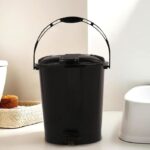When setting up a new router or adding devices to an existing one, you may have encountered the term WPS (Wi-Fi Protected Setup). It’s a feature that simplifies the process of connecting devices to your Wi-Fi network without needing to enter a long and complex Wi-Fi password. However, if you are unfamiliar with the process, you might be wondering: where is the WPS button on my router?
In this blog, we’ll walk you through everything you need to know about WPS, its benefits, and how to use it effectively. We will also answer that important question: where is the WPS button on my router?
What is WPS and Why is it Important?
Before diving into the specifics of locating the WPS button on your router, let’s understand what WPS actually does. WPS is a network security standard designed to make it easier to connect devices to your wireless network. Essentially, it allows you to connect devices to your router with a simple push of a button, or by entering a PIN, depending on your router model.
For most users, WPS is a real convenience, especially when you want to avoid typing in complex Wi-Fi passwords on devices like printers, smart TVs, and other Wi-Fi-enabled gadgets. The WPS process is typically initiated by either pressing a physical button on the router or entering a PIN, depending on the router’s setup.
Where is the WPS Button on My Router?
Now, the most pressing question: where is the WPS button on my router? This can vary slightly depending on the brand and model of your router, but in general, it should be easy to locate once you know what to look for.
-
Physical WPS Button: On most routers, the WPS button is typically located on the back or side panel. It’s a small, often circular button that might be labeled “WPS.” It can sometimes be inside a small hole, requiring a paperclip or pin to press it. This is especially common in more compact routers.
-
Router’s Web Interface: If your router does not have a physical WPS button, don’t worry. You can also initiate WPS through the router’s web interface. Log into your router’s management portal (typically by entering the router’s IP address into a web browser), and you may find an option to enable WPS from there.
You can also learn more about finding the WPS button on your router on our page here: Where is the WPS Button on My Router?
What Devices Can Use WPS?
Many modern devices support WPS, allowing you to easily add them to your network. These include:
-
Printers
-
Smartphones and Tablets
-
Smart TVs and Streaming Devices
-
Laptops
-
Wi-Fi Extenders
By simply pressing the WPS button on your router and following the instructions on your device, the connection is established automatically without requiring a password. This makes adding devices to your network much more straightforward.
How Does WPS Work?
To help clarify the process, let’s break it down into simple steps:
-
Press the WPS button on your router: This usually triggers the router to start looking for nearby devices that support WPS.
-
Press the WPS button on your device: Your device will automatically try to pair with the router. For devices like smartphones and tablets, you might need to navigate to the Wi-Fi settings and select the option to connect via WPS.
-
Wait for the connection: The router and the device will establish a secure connection, and you should see a notification on your device once it’s successfully connected.
If you’re looking for more detailed guidance on the WPS feature and how to use it, check out the WPS button on router page for more instructions.
Troubleshooting WPS Issues
Sometimes, even with WPS, you may encounter issues. Here are a few things to check:
-
Router WPS Feature Disabled: Some routers may have WPS disabled by default due to security concerns. You can enable it by accessing your router’s settings through the web interface.
-
Outdated Firmware: Ensure that your router’s firmware is up-to-date, as older firmware versions might cause WPS issues.
-
WPS PIN Not Working: If your router uses a PIN to initiate the connection and it’s not working, try resetting the router or generating a new PIN.
If you continue to experience problems with WPS on your router, you can always reach out to Callroutersupport for assistance. Their experts are ready to help you troubleshoot WPS-related issues effectively.
Security Considerations with WPS
While WPS can be a convenient feature, it does come with some security risks. In the past, there have been vulnerabilities discovered in WPS, especially when using the PIN method for authentication. It’s crucial to be aware of these potential risks:
-
PIN Brute Force Attacks: A WPS PIN is usually an 8-digit number, and it’s possible for attackers to use brute force techniques to crack the PIN if your router does not lock out after several failed attempts.
-
Disabling WPS for Security: If you’re particularly concerned about security, consider disabling WPS on your router and sticking with the traditional method of connecting devices using Wi-Fi passwords.
In case you want to disable WPS on your router for added security, you can usually do so through the router’s management interface. Just check your router’s settings for the WPS option and turn it off.
Conclusion
In conclusion, knowing where the WPS button on your router is located and how to use it can save you a lot of time and hassle when connecting new devices to your Wi-Fi network. It’s an easy-to-use feature that eliminates the need for typing in long passwords. However, it’s also important to be aware of the potential security risks and take steps to mitigate them.
For a more detailed guide on WPS and troubleshooting tips, check out our dedicated page on the WPS button on router at Callroutersupport. Whether you’re dealing with setup or technical difficulties, Callroutersupport is always here to help.
We hope this guide has helped you understand where the WPS button on your router is and how to use it effectively. If you need further assistance, don’t hesitate to reach out to Callroutersupport for expert help.




